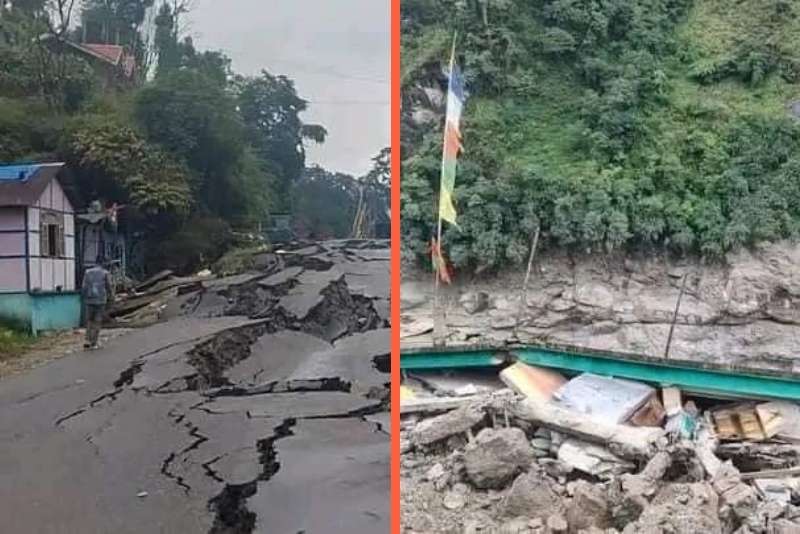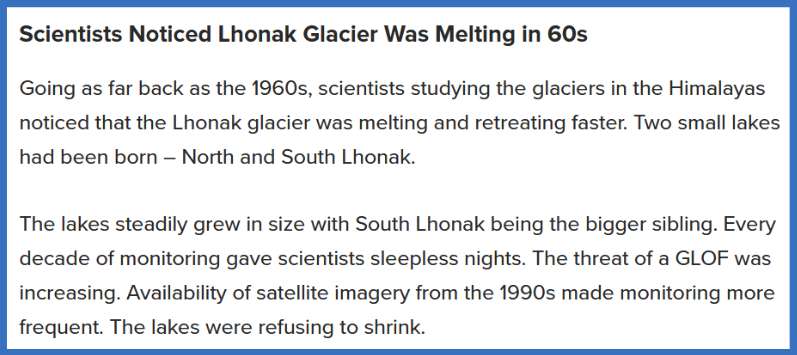
Gangtokian: The Indian state of Sikkim recently experienced one of its worst-ever flash floods, triggered by an outburst from South Lonak Lake. This natural disaster not only claimed lives but also wiped out critical infrastructure, including the Tista stage three Dam, with a financial cost that is just beginning to be calculated.
A Looming Disaster Foretold
The catastrophic event was sadly foretold, with warnings dating back to at least 2014. Tom Clement’s 2014 article for the Pulitzer Center highlighted the vulnerability of the Tista River Basin, which holds 313 glacial lakes prone to outbursts. The accompanying destructive force of these glacial Lake Outburst Floods (GLOFs) has long been recognized.
The Tragedy Unfolds
The flash floods from South Lonak Lake surged through the state, washing away the 1,200-megawatt Sikkim Urja Tista stage three Dam, a massive structure built at a cost of ₹14,000 crores (approximately $1.9 billion USD). Additionally, 11 bridges were destroyed, close to 20 people lost their lives, and more than 100 remain missing, including over 20 army personnel. The catastrophe left around 22,000 people affected, and thousands of tourists stranded in the region, plunging the state into darkness as it grappled with the loss of power.
A Growing Environmental Concern
The key factor contributing to such disasters is the rapidly receding glaciers in the Himalayan region. South Lonak Lake, for instance, witnessed its glacier retract by 2 kilometers between 1962 and 2008 and an additional 400 meters between 2008 and 2019. Recent images captured by ISRO (Indian Space Research Organization) showed the lake dramatically reduced in size after the flash floods.

Ignoring the Warnings
Scientific studies have consistently warned about the potential for glacial lake outburst floods in the region. The first inventory of glacial lakes in Sikkim Himalaya, conducted in 2003, identified 266 lakes, with 14 marked as potentially critical. Subsequent studies in 2013 and 2017 reiterated these concerns. However, these warnings often went unheeded, leading to inadequate infrastructure planning and construction.
Also Read: Melting Glaciers in Himalayas Threaten Lives and Livelihoods of Billions, Study Warns
A Call for Climate-Resilient Development
The disaster in Sikkim underscores the urgent need for climate-resilient infrastructure and sustainable development in the fragile Himalayan ecosystem. While development is essential, it must not come at the cost of long-term environmental damage and human lives. Design changes and better planning, informed by scientific data, are imperative to mitigate the impact of climate change on the region’s hydrology.
Learning from Tragedies Past
This is not an isolated incident. Similar tragedies have struck other regions in the Himalayas, like Karat in 2013 and Himachal Pradesh in recent years. The cumulative effect of climate change, melting glaciers, and intensified rainfall demands immediate attention. Balancing development with environmental preservation is a challenge that transcends borders and politics.
The Way Forward
To prevent such disasters from recurring, governments and citizens alike must take climate change seriously. This involves listening to scientific warnings, conducting thorough studies before construction, and demanding accountability from those responsible for infrastructure projects. Finding a sustainable middle ground is essential for safeguarding human lives and taxpayer-funded investments.
The recent flash floods in Sikkim serve as a poignant reminder that climate change is a reality, and it demands our unwavering attention and action. Ignoring the signs and neglecting environmental concerns can lead to devastating consequences. It is up to individuals and governments to rise to the challenge and pave the way for a safer and more sustainable future.
Also Read: Sikkim Floods: 56 Lives Lost, 141 Still Missing, Ongoing Rescue Efforts Continue
Gangtokian Web Team, 08/10/23
















































